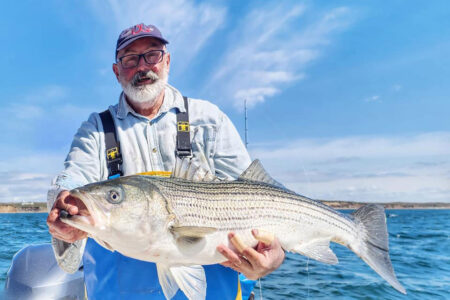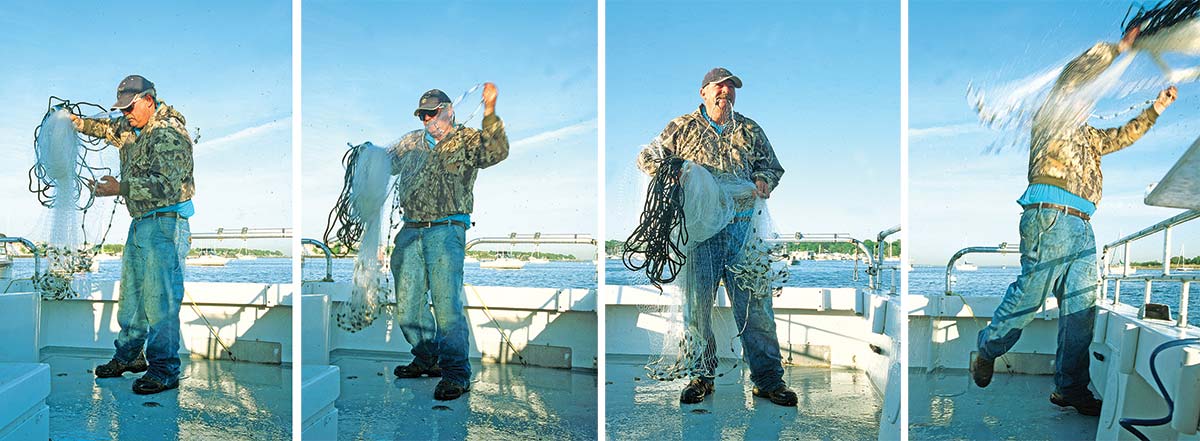
Corralling, catching, keeping and livelining bunker for striped bass.
Live bunker fishing for trophy striped bass is the favorite of many anglers and one of the most rewarding ways to catch trophy striped bass up and down the Striper Coast. As a charter boat captain aboard Andrea’s Toy, a 31-foot Contender FA, we put a lot of focus on live bunker fishing in Raritan Bay and surrounding NY Bight. Obtaining quality baits is essential to livelining and my go to method of procurement is cast netting.
I exclusively use Percy Cast Nets which are handmade by Percy Wentworth in his Staten Island, NY home. Running back and forth across state lines it is important to follow various state regulations when attempting to cast net bait. For example, in New Jersey waters I throw a 12-foot radius net which opens to 24 feet, but when in New York waters I have to scale down to a 10-foot radius net to adhere to state regulations.
If you’re looking to make a cast net purchase, be sure to check your own state regulations first so that you know what radius is allowed there and in neighboring state waters.
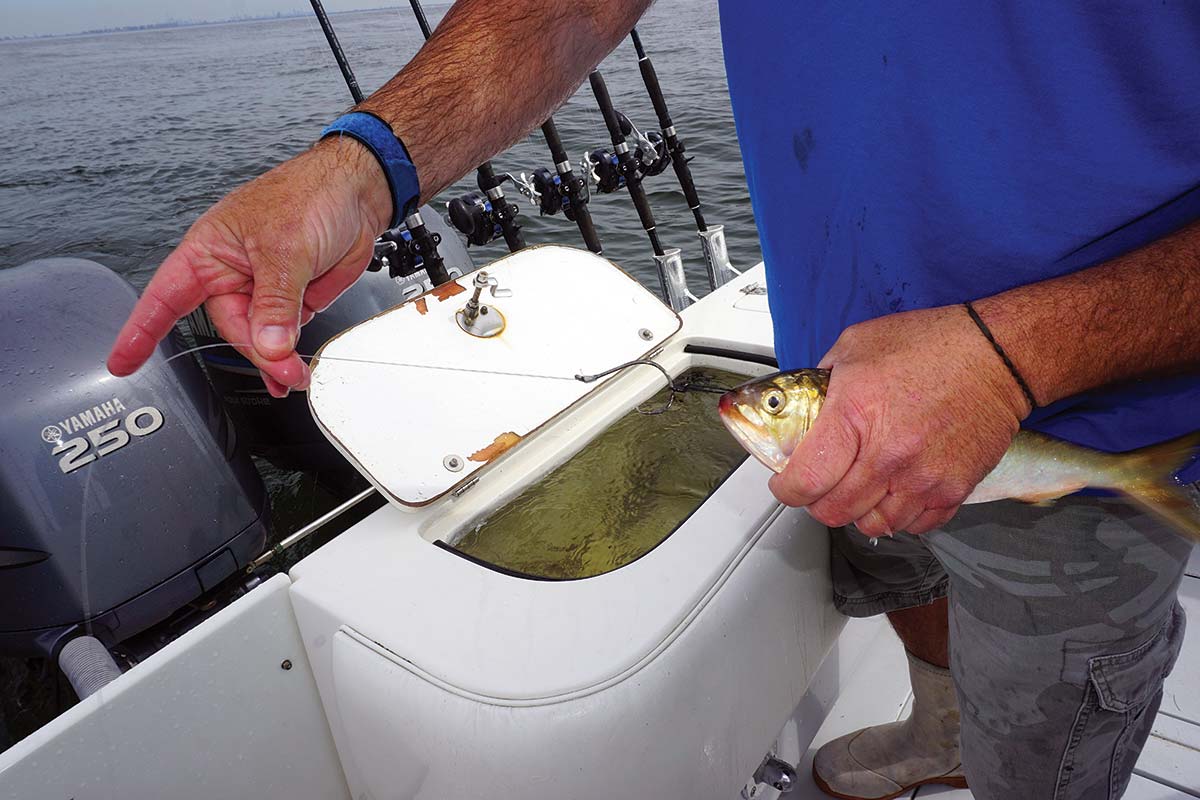
Working The School
Menhaden, also known as bunker or pogies, travel in schools and can readily be found in marinas, harbors, as well as open water areas. Locating bunker is typically easiest around sunrise. Keep a look out for ripples on the water while monitoring your fishfinder to mark schools of bait below the surface. Polarized sunglasses help to locate the schools of bait in daylight hours as you will notice a dark patch of water sticking out from the other areas.
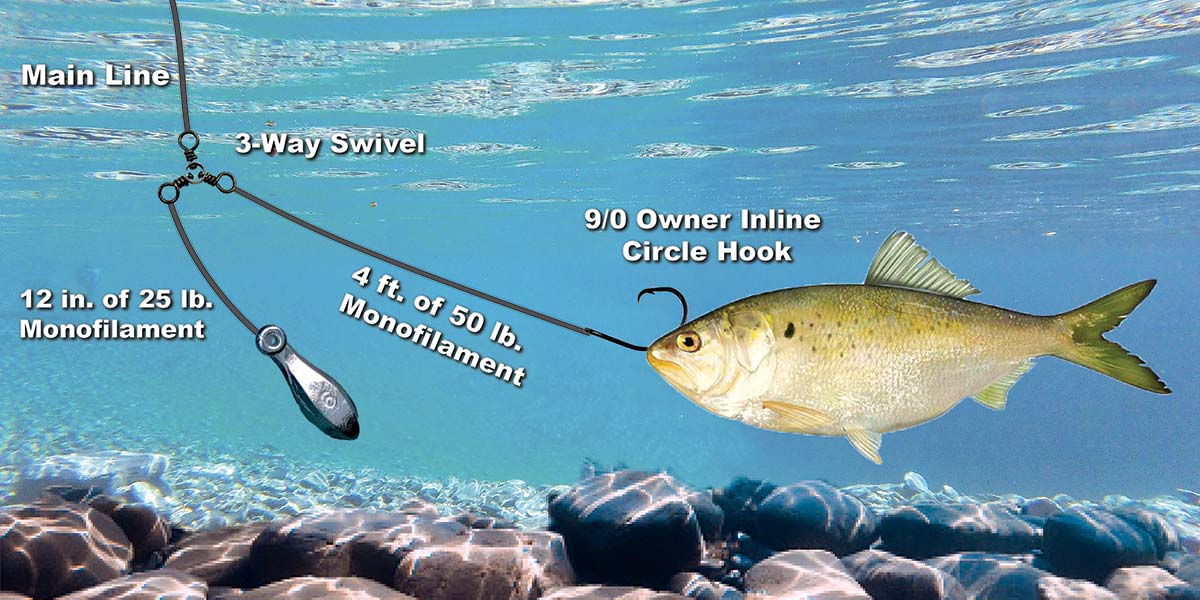
Bunker are filter feeders and will often swim into the wind giving us an educated guess on where to find them on those windy days. I typically start the morning looking for bunker as soon as I throw the dock lines and depart our slip. I will have my mate load the net and be prepared to throw the moment we see those aforementioned signs of bunker under or next to the boat.
When in water deeper than 20 feet I use a technique dubbed “corralling” by spinning the boat in a tight circle around a school of bunker. This allows submerged bubbles from our prop wash to act as a cone and keep the bunker within that circle. Once the circle is closed, the net is thrown and it begins sinking down toward the school of baitfish. Once the net reaches the bottom we cinch the hand line to close the net, haul it aboard and work diligently to put our precious baits in the live well.
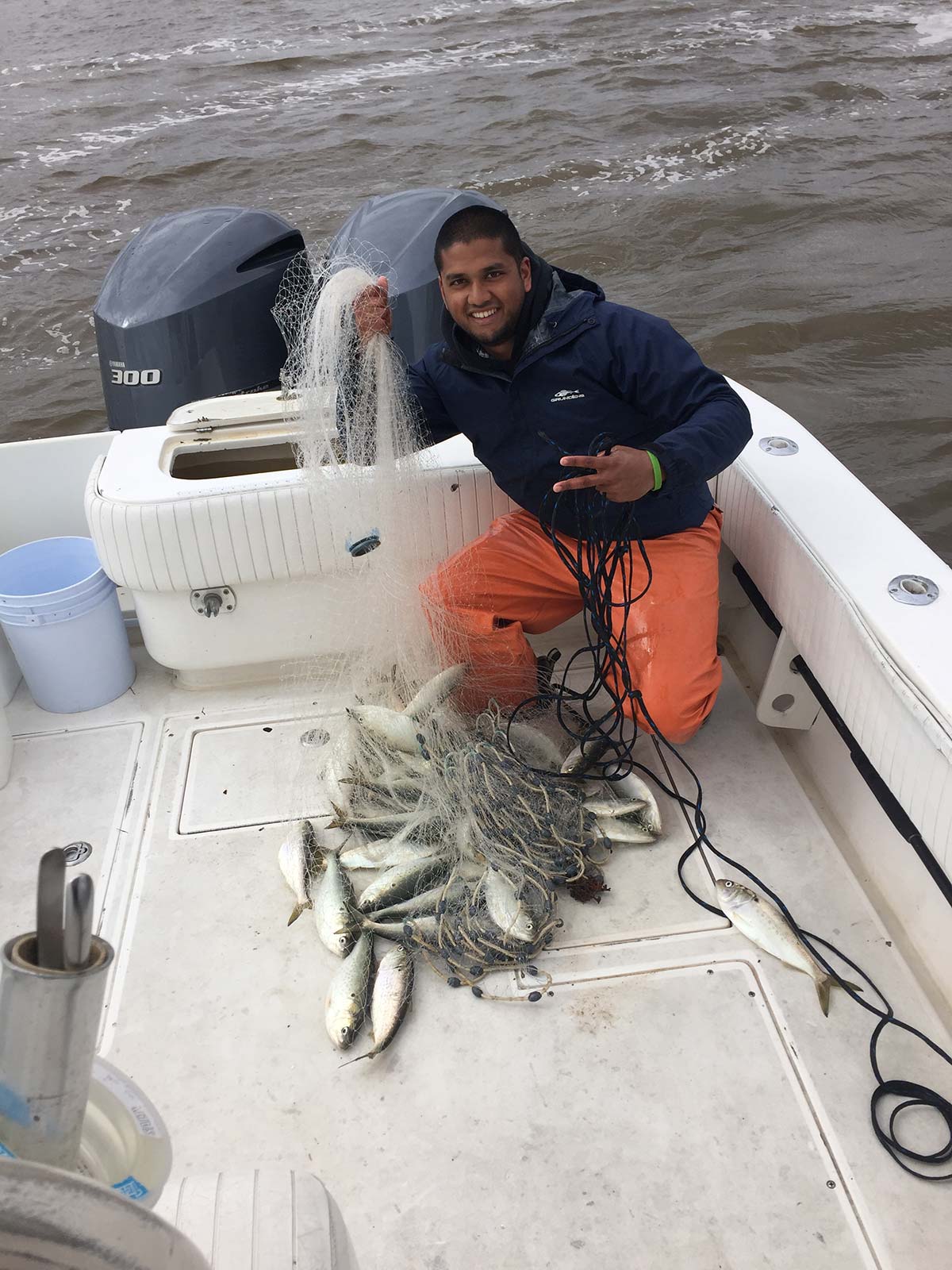
A more traditional way to obtain bunker is snagging – casting a weighted treble hook beyond the school of bunker to let it sink, then making sharp sweeps of the rod to jerk the snag hook through the water to connect with and impale a live bunker. However, I most other professional guides prefer cast netting as we can fill our live wells in minutes as opposed to snagging baits for a long period of time. Additionally, the quality of baits decrease with snagging as they lose scales and start to bleed due to puncture wounds from the snag hook.
On our 31 Contender we have twin 40-gallon live wells with high flow rates and rounded corners to maximize the lifespan and maintain the quality of bunker throughout our trip. Depending on size, a good rule of thumb is keep one to two bunker per gallon in your live well to prevent overcrowding. Remove any dead or bleeding bunker out of the live well and save for potential chunking later in the trip.
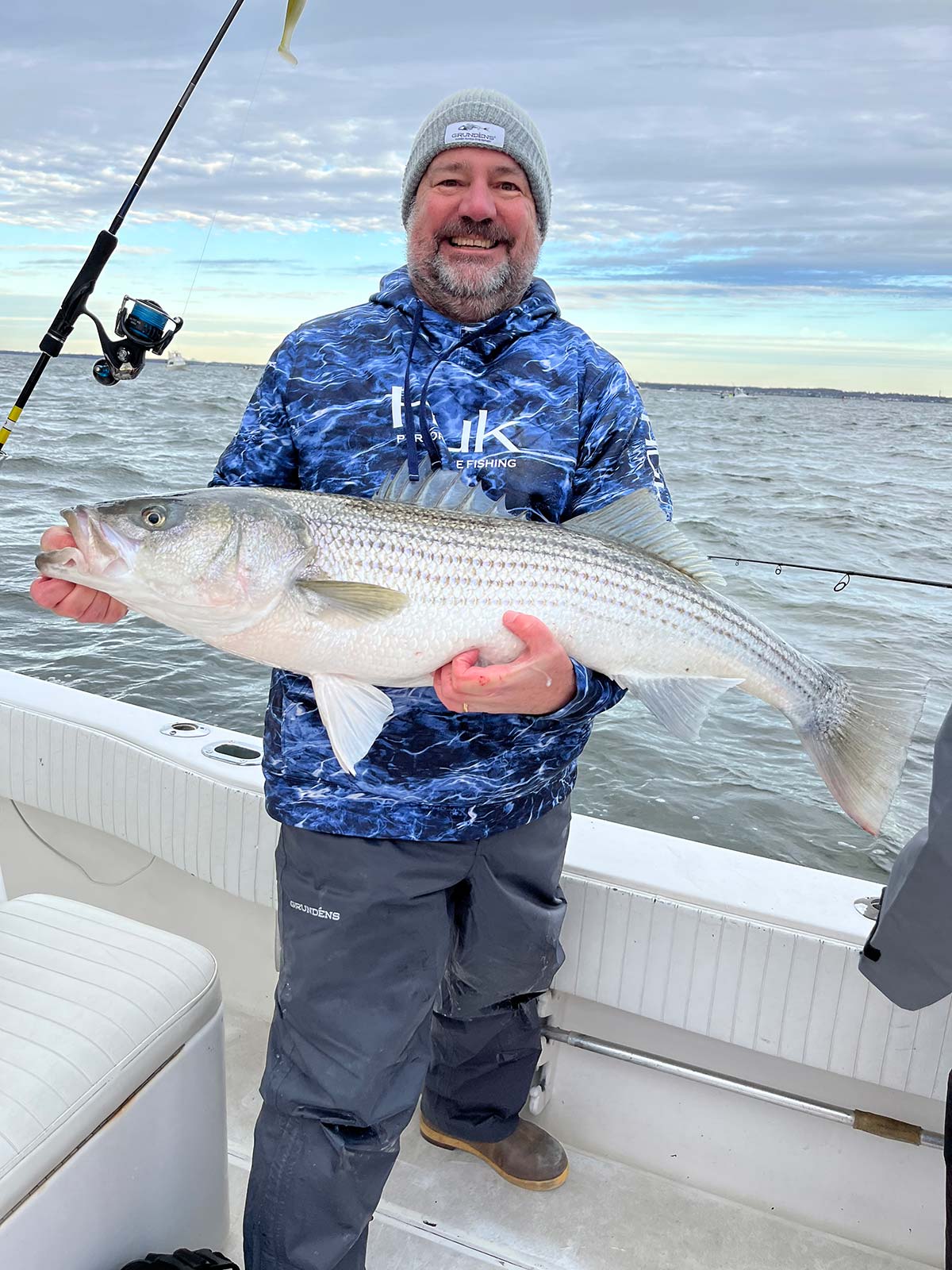
On The Striper Hunt
If I mark striped bass in the area of the bunker pods which we just netted we will drift in that same area; more often than not however, after making bait I will make a run to another area to fish our baits. Looking for contour lines and underwater structure can be productive especially in my local waters.
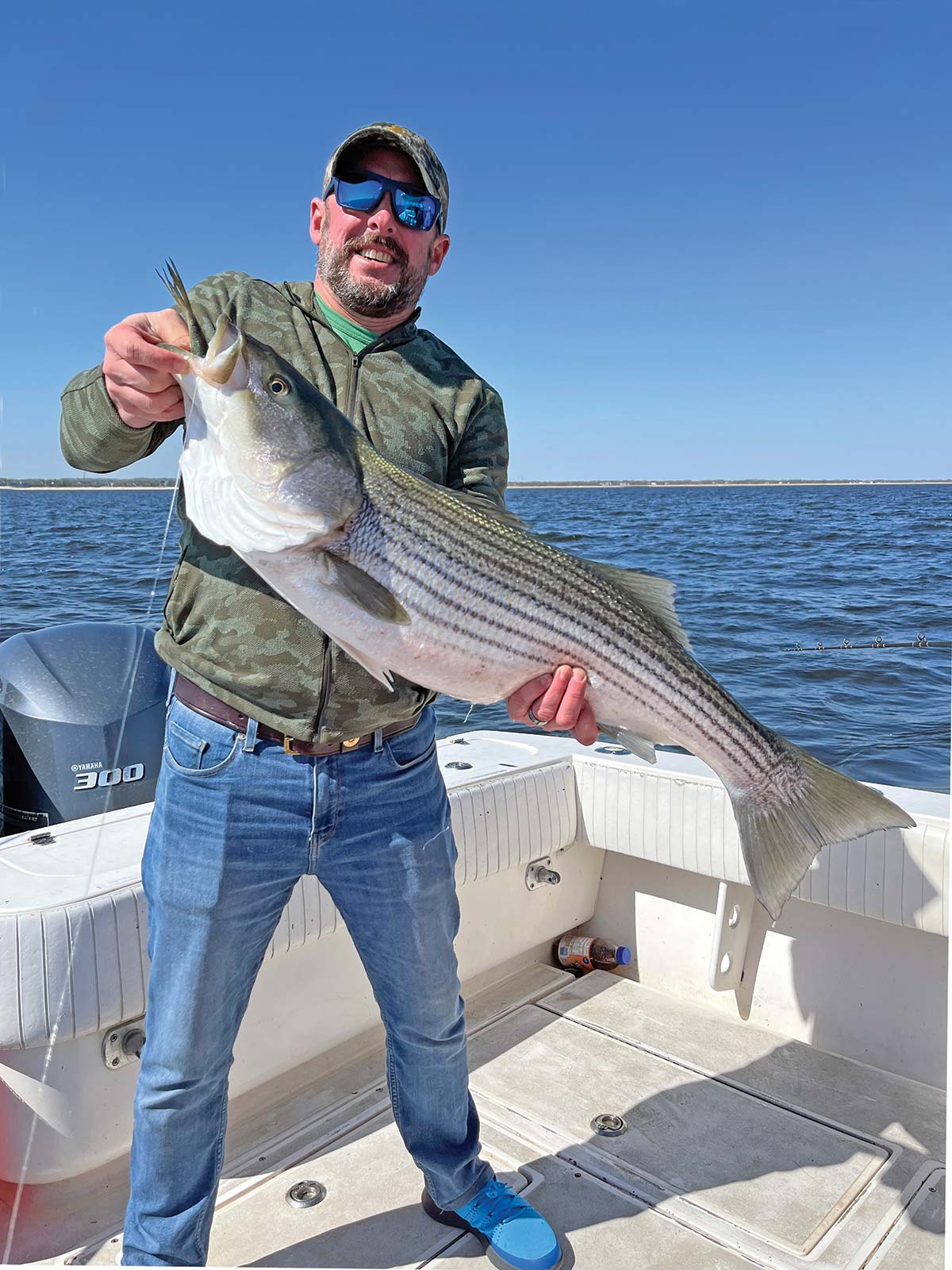
Start your drift a few hundred feet up-current of the contour lines or area you would like to fish and drift into it. Drop baits to the desired depth and maintain light tension to encourage your bait to swim away from the boat as bunker will usually swim away from this line pressure. If pressure is not applied to the bait it will often swim in circles or go under the boat. Simply reel it in, gently lob the bait in the direction you want it to go and apply gentle resistance. Sometimes pitching bait toward rock piles or other protruding structure can get striped bass fired up and bolting to get a quick meal.
For gear selection, you can use a medium-heavy spinning rod with a fast action paired with a Shimano Baitrunner 8000 series reel. I prefer fishing a conventional setup using a 7-foot Shimano Tallus TLXC70MH rod matched with a Shimano Torium 16HG loaded with 40-pound braid attached to 10 feet of 50-pound monofilament leader via a FG knot. I then take a three-way swivel and attach it to the end of the main line via a uni knot. On one arm of the swivel I tie a 12-inch piece of 25-pound mono with a perfection loop on one end to use as a sinker holder. On the other arm of the three-way swivel, I will put 4 to 5 feet of 50-pound monofilament or fluorocarbon leader snelled to a 9/0 Owner 5387 circle hook. This rig allows you to quickly change on and off a weight to target fish at different depths.
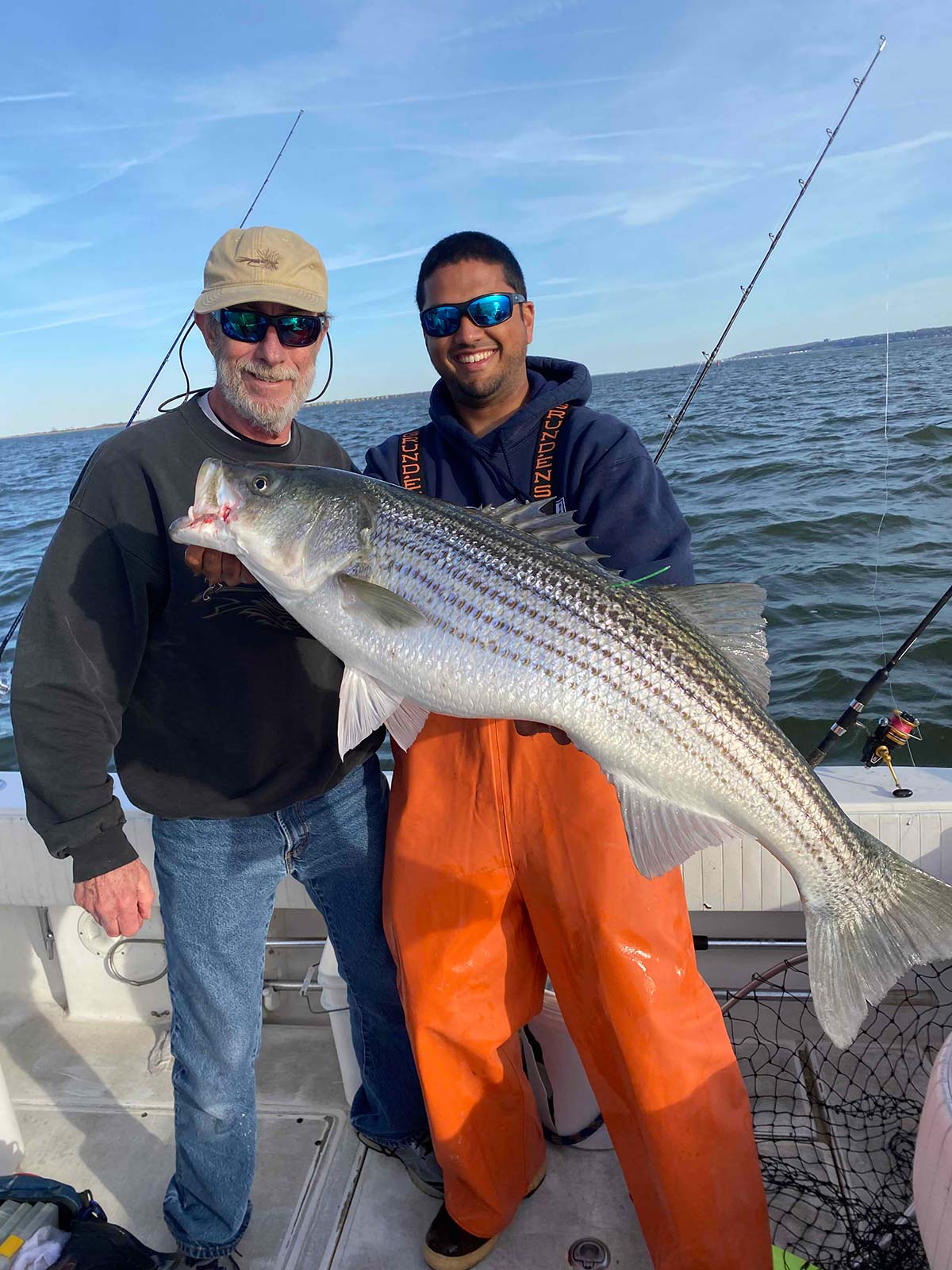
When marking fish tight to the bottom, I’ll put a 4- to 8-ounce sinker on the short 25-pound loop and hook a bunker through the two nostril holes and send it down to the bottom. I do not like to hook bunker through the jaw or mouth as this will be a detriment to the health and longevity of the bait. Adjust accordingly to changes in depth, drift, and other conditions to keep your bait active in the zone.
When marking fish in the middle of the water column, I will take off the weight and hook the bunker on its underside between the anal fin and the tail fin. Even when taking off the weight I always keep the 12 inches of line attached to the three-way swivel in order to quickly change and adjust as we move to different depths and the fish move in the water column. At a minimum keep your unweighted bait 100 feet or more away from the boat and stagger lines at different lengths away from the boat to reduce tangling between anglers.
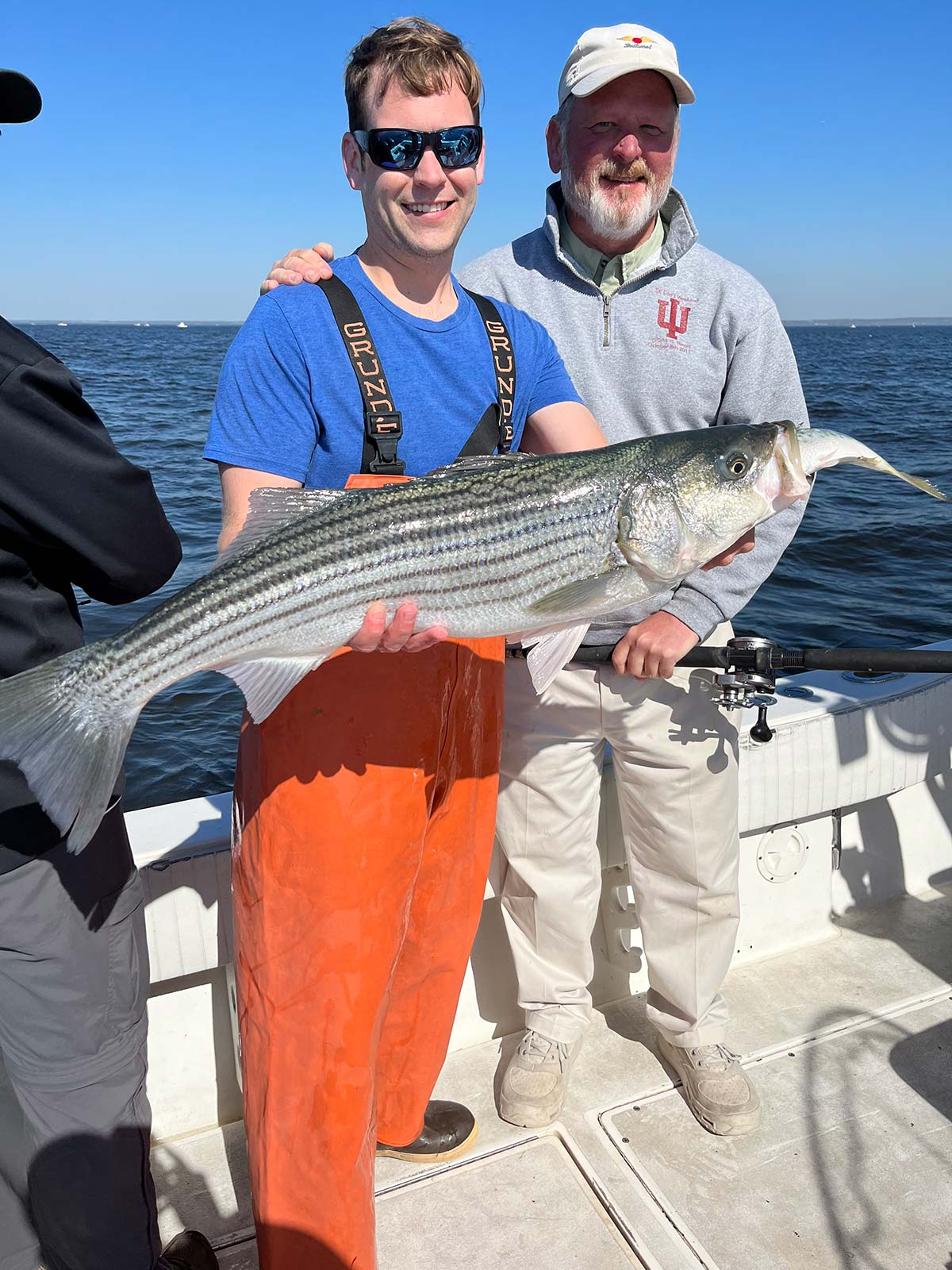
| NET SELECTION |
| When choosing the proper castnet, it’s important to consider the size of the bait you’re targeting as well as depth of water. For targeting peanut bunker, typically in shallow water, I use a 10-foot radius net with half-inch square mesh. Important to note: mesh sizes of net are usually measured as the un-stretched length.
When targeting adult bunker I nearly always use a 12-foot radius net with 1-1/4-inch mesh. The only time I scale down to a 10-foot net is when in tight quarters around marinas or sailboat moorings or in waters like New York where regulations mandate the largest size net permitted as a 10-foot radius. Questions? Contact me directly at 201-421-8653 or [email protected]. |
Striped bass will most often attack bunker headfirst – or at the very least, they’ll swallow that bait headfirst – so knowing where your bait is hooked can help you adjust to the amount of time needed before actually connecting with a trophy striped bass. I like to hold the rod in my left hand with the reel in free spool and my right thumb acting as a very light drag on the spool. When I feel my bait getting erratic or moving quickly, I will gently lift my thumb off the spool, allowing 1 to 2 feet of line to peel off the reel and allow the bait to act as natural as possible. When a striped bass picks up the bunker and starts to run it will take off via steady pulls of line off the reel. I typically let the bass run with the bunker by waiting five to seven seconds before engaging the drag, gently lifting the rod tip up, and being sure to not “set the hook” as that will likely pull the bunker right out of the mouth of the striped bass.
It is very common to want to set the hook but patience is key! With the new circle hook regulations in place it is important to allow striped bass to properly eat the bait to allow the opportunity for the circle hook to get caught in the corner of its jaw when the fish makes a turn and you engage the drag. There can be a learning curve for those new to using circle hooks compared to methods of the past but this was a great change implemented across the Striper Coast. Not only are circle hooks required when fishing live bait, they are effective and reduce gut-hooking of fish to allow for easy dehooking.
Keep an eye out on The Fisherman’s YouTube page for a “how to” video with the author and his crew on effectively tossing a cast net.



